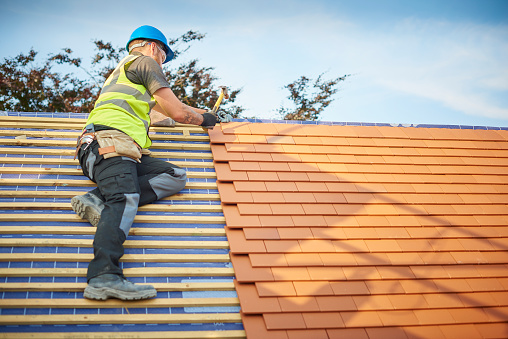Introduction: Separating Fact from Fiction
Roofing is an essential component of any home, providing protection, insulation, and structural integrity. However, there are numerous myths and misconceptions surrounding roofing that can lead homeowners astray when it comes to making decisions about their roof. In this article, Ainger Roofing, a roofing contractor in Barrie, Ontario will debunk some of the most common roofing myths and shed light on the truth behind these misconceptions. By gaining accurate information, you can ensure that your roofing choices are based on facts, not fiction.

Myth 1: You Can Save Money by Layering New Shingles Over Old Ones
One prevalent myth is that layering new shingles over old ones can save money during roof replacement. While it may seem cost-effective at first, this practice can lead to various problems in the long run.
Debunked: Layering shingles can add excess weight to your roof, potentially compromising its structural integrity. It also prevents proper inspection of the roof deck for any damage or issues that need addressing. Opt for a complete tear-off and roof replacement to ensure a sturdy and long-lasting roofing system.
Myth 2: Roof Maintenance is Unnecessary
Some homeowners believe that roofs don’t require regular maintenance and can withstand the elements without intervention.
Debunked: Regular roof maintenance is crucial to extend its lifespan and prevent costly repairs. Inspections and minor repairs can address potential issues before they escalate into major problems, saving you time, money, and stress in the long term.
Myth 3: Leaks Are the Only Sign of Roof Damage
Many homeowners assume that a roof leak is the only indicator of damage and that as long as there are no visible leaks, the roof is in good condition.
Debunked: Roof damage can manifest in various ways, including cracked or missing shingles, curling edges, sagging areas, and dark spots on the ceiling. Regular inspections by a professional can identify these issues early on and prevent more extensive damage.
Myth 4: All Roofing Materials are the Same
It’s a common belief that all roofing materials are essentially the same, and choosing one over the other makes little difference.
Debunked: Roofing materials vary significantly in terms of durability, longevity, energy efficiency, and appearance. Factors like climate, budget, and personal preferences should guide your choice of roofing material.
Myth 5: DIY Roof Repairs are Always a Good Idea
With the abundance of DIY tutorials available, some homeowners feel confident in attempting roof repairs on their own.
Debunked: Roof repairs can be complex and dangerous, especially for those without experience and proper safety equipment. DIY repairs may not be as effective as professional solutions and can even lead to more significant issues. Hiring a licensed roofing contractor ensures the job is done correctly and safely.
Myth 6: Roof Insulation is Only Important in Cold Climates
Many believe that roof insulation only matters in colder regions to keep homes warm.
Debunked: Roof insulation is essential in both cold and hot climates. It helps regulate indoor temperatures, reduces energy consumption, and enhances overall comfort throughout the year.
FAQs
- Can I install a new roof over an existing one if it has no leaks? It’s not recommended. Layering new shingles over old ones can lead to various problems and may void manufacturer warranties.
- How often should I have my roof inspected? It is advisable to have your roof professionally inspected at least once a year, preferably before and after the winter season.
- Are all roof leaks easy to spot from inside the house? No, not all roof leaks are immediately visible from inside the house. Some leaks may only become apparent during heavy rain or when water has penetrated the ceiling.
- Can I replace missing shingles myself? While some minor repairs can be done DIY, it’s best to have a professional roofer assess the damage and make the necessary repairs to ensure proper sealing and performance.
- Does roof material impact energy efficiency? Yes, the choice of roofing material can significantly impact energy efficiency. Certain materials offer better insulation properties and can help reduce heating and cooling costs.
Conclusion: Empowering Roofing Knowledge
Debunking common roofing myths allows homeowners to make informed decisions about their roof’s care, materials, and repairs. Ainger Roofing, a roofing contractor, says by separating fact from fiction, you can better protect your investment, ensure the longevity of your roof, and maintain a safe and comfortable home for years to come.

